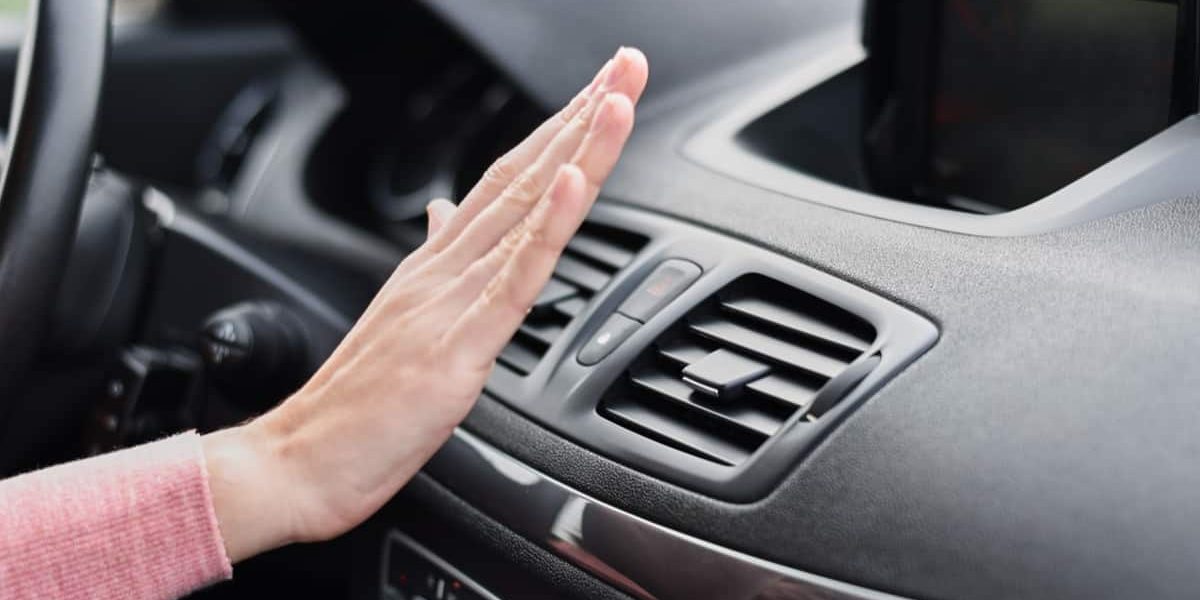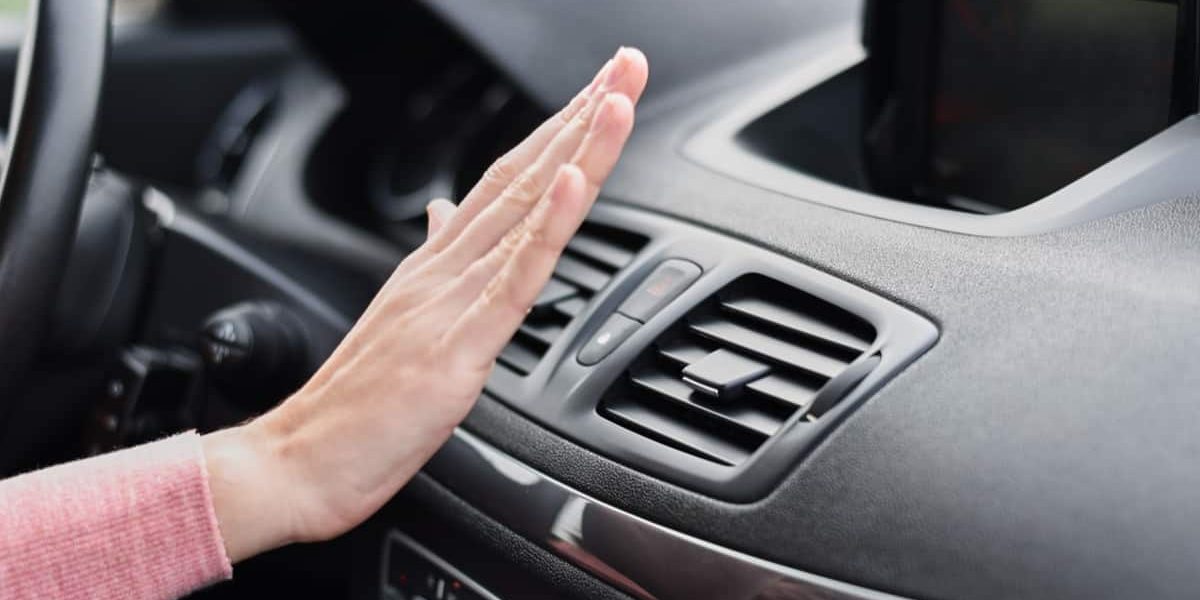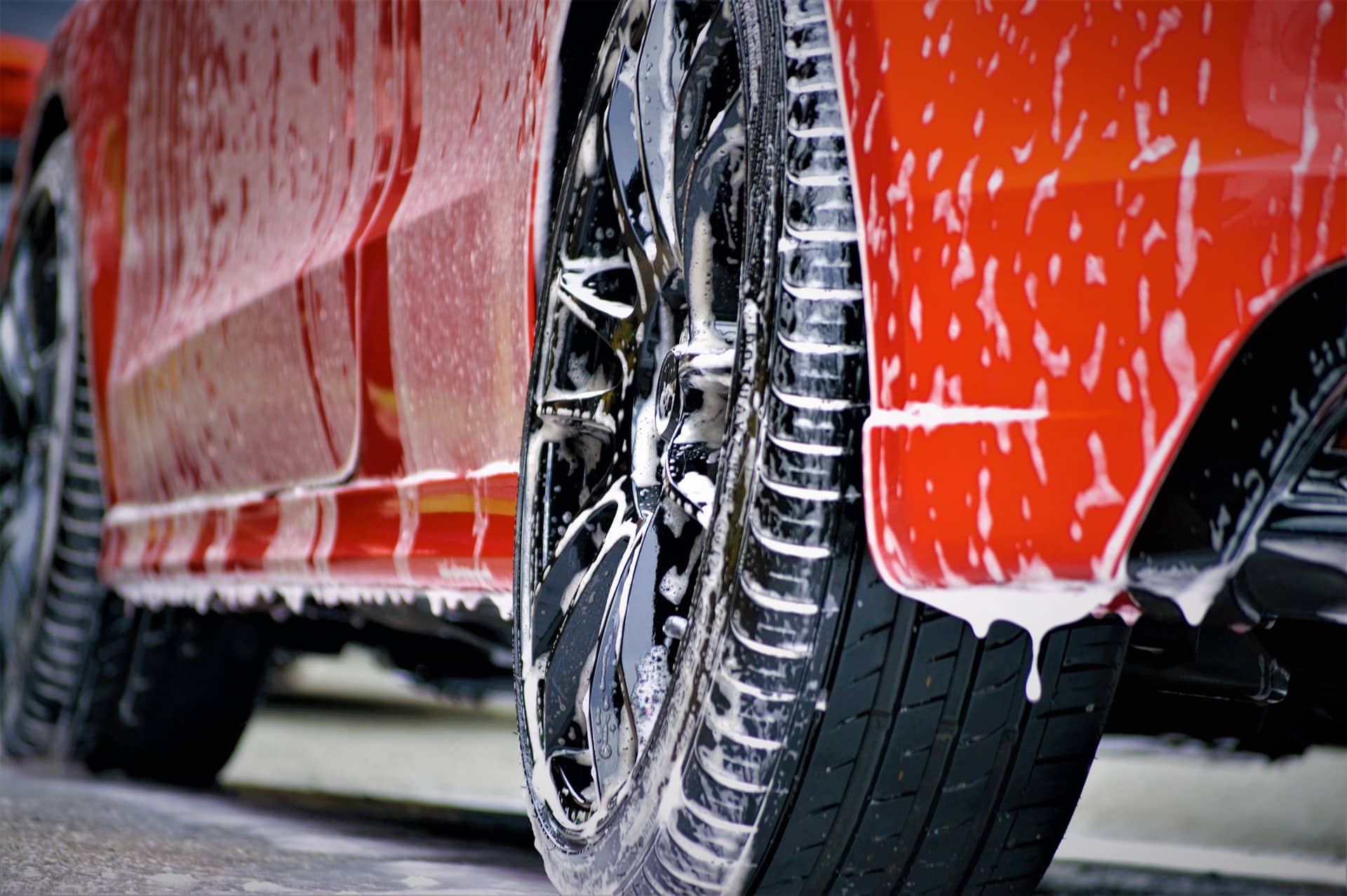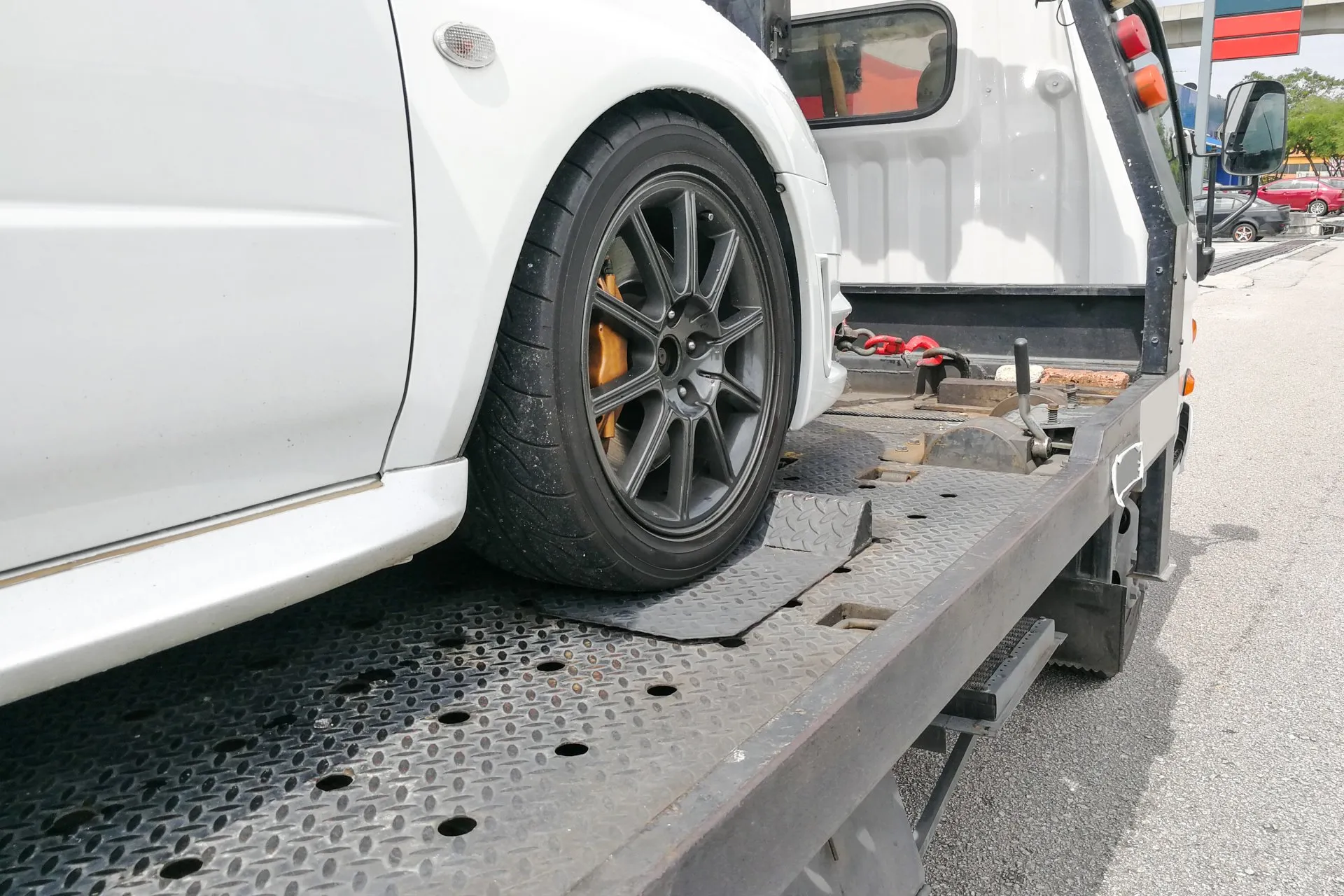Why Does My Car’s AC Only Get Cold When I Accelerating


Why does my car’s AC only get cold when I’m accelerating?
The AC in my car seems to only work when I am accelerating, but not when it’s idle. This may be due to the compressor clutch not engaging properly, which causes decreased cooling at idle speeds. When the engine speed and RPM increase with acceleration, the AC compressor works faster to cool down the car. This can also happen if there is low refrigerant pressure or a malfunctioning fan motor.
Another possible reason could be a blocked condenser unit caused by dirt and debris accumulation. Similarly, clogged filters can reduce airflow into the car, resulting in poor cooling at low speeds. Regular maintenance, such as air filter cleaning and checking for leaks in the refrigerant system, can prevent such issues.
It’s important to note that issues with AC performance can vary depending on several factors, like the make of the car, external temperature, humidity levels, and maintenance habits. It’s always recommended to have your car’s AC checked annually by a professional mechanic to avoid complex repairs that occur over time without proper care.
Potential Causes of the Problem
To identify why your car’s AC may only get cold when accelerating, explore potential causes of the problem with low refrigerant levels, a damaged compressor, a clogged or restricted orifice tube, issues with the condenser, or a malfunctioning blower fan.
Low Refrigerant Levels
Insufficient levels of refrigerant in the air conditioning unit may lead to cooling issues. The origin of this aspect could be traced to low refrigerant levels, which limit the system’s ability to generate cold air. This issue could arise due to a leak in the coils or capillary tubes and may significantly affect system efficiency.
The improper functioning of the compressor, evaporator, or condenser is commonly linked with compacted composition failures such as freezing of the compressor oil or motor issues. When any of these components fail, it will result in lower cooling capability and a decreased refrigerant flow rate, rendering insufficient generation for adequate airflow.
Additionally, the buildup of unwanted condensation inside the AC unit may cause low refrigerant levels as well. The excess moisture can enter vital parts, such as pipes, and clog them up over time.
To deal with low refrigerant issues, one solution could be repairing leaks and refilling refrigerants if necessary, which should only be done by licensed professionals.
- Regular inspection services have to be placed to keep track of any signs of leaks and other internal faults that may affect functionality early on before it takes place, resulting in costly overall repairs at later stages.
- Therefore, conducting timely repairs to prevent potential problems ensures efficient performance of the air conditioning unit throughout all seasons.
Damaged Compressor
This issue could occur due to a malfunctioning piece of equipment that is responsible for compressing gas into the unit. The compressor may be damaged if it has been subjected to excessive pressure or runs without lubrication. This can lead to overheating and other issues, ultimately leading to equipment failure.
In addition, inadequate maintenance of the compressor can also cause damage. Lack of regular inspection, cleaning, or replacement of worn components can result in blockages that may cause excessive pressure buildup.
It is crucial to keep the compressor in good condition by regularly inspecting it, performing preventive maintenance, and replacing faulty parts whenever necessary. Lubrication should be done frequently and only with recommended oils as per manufacturer instructions.
To avoid further complications, always follow the recommended operating procedures and ensure that the compressor is not pushed beyond its capacity limit. Regular servicing will ensure smooth operation while maximising the product’s lifespan.
Clogged or Restricted Orifice Tube
The possible culprit of a restricted flow in the vehicle’s air conditioning system is an obstructed or narrowed opening. This could be due to a blockage in the tube that regulates refrigerant flow, commonly referred to as the Orifice Tube.
A restricted orifice tube can be caused by a variety of factors, such as debris, dirt, and metal shavings circulating within the AC system, traces of moisture and oil that react and create a sludge-like substance, or manufacturing defects, such as incorrect sizing or placement. These factors can negatively impact the cooling capacity and efficiency of the air conditioning unit.
During diagnosis, technicians usually inspect for signs such as frost, excessive pressure readings at low speeds, or poor cooling output from the vents. They may also use specialised equipment to measure temperature differentials before and after the orifice tube.
So if you notice signs of reduced or warm airflow from your vehicle’s AC system, it is essential to have a professional mechanic check for any orifice tube restrictions immediately. Delaying repairs could result in more damage and costlier repairs down the road. Act now before it’s too late!
Issues with the Condenser
The malfunctioning of the energy-dissipating system may indicate issues with the cooling mechanism. The condenser, a crucial component that transfers heat, might have leaks, blockages or breakdowns resulting from wear & tear or external damage. Such issues lead to increased temperature within the system and may cause permanent harm to the components.
Regular maintenance and timely replacement of worn-out parts are essential in preventing damage to the condenser. Failure to do so could result in a breakdown of the entire system and ultimately affect work operations.
The blowing dust and debris entering the air conditioner due to inadequate filtration can contaminate the condenser coil – leading to reduced performance efficiency.
In one instance, a factory’s workers had suffered from heat exhaustion due to faulty heating systems that affected productivity during summer months; upon inspection, technicians found leaks in their condensers that went unnoticed causing severe losses for their company.
Malfunctioning Blower Fan
The potential cause of the issue lies with a fan that is not functioning as it should. When this component experiences issues, it can affect the entire system’s performance and efficiency. A faulty blower fan can lead to insufficient heating or cooling, strange noises, and other undesired effects.
The malfunctioning blower fan may display different symptoms depending on what exactly went wrong. The cause can be physical damage to the blades or motor, electrical faults due to wiring issues or blown fuses, worn-out bearings leading to excessive vibration, or other similar reasons.
It is important to get professional help in diagnosing the exact cause of a malfunctioning blower fan rather than self-assessing. Troubleshooting electrical faults without proper training may result in critical injuries to personnel or further damage to the HVAC system.
Pro Tip: Regular maintenance and cleaning of the ventilation system can prevent issues such as clogged filters or motor burnout.
Diagnosing the Issue
To diagnose the issue of why your car AC only gets cold when accelerating, check refrigerant levels, test the compressor, inspect the orifice tube, examine the condenser, and check the blower fan. Each sub-section will provide a potential solution to the problem.
Check Refrigerant Levels
To ensure the optimal performance of your refrigeration system, it is crucial to ascertain that the refrigerant levels are at an appropriate level. Insufficient amounts of refrigerants could lead to poor cooling ability or compressor damage. Therefore, inspecting refrigerant levels should be an essential aspect of routine maintenance.
Here’s a list of steps to follow to check the refrigerant levels in your system:
- Start the AC Unit: Power on the AC unit and wait for a short while for it to settle and reach its steady state.
- Access the Service Valves: Look for the service valves located near both ends of your AC unit. Attach one side of a pressure gauge to each valve, ensuring that you attach them snugly.
- Read and Record Pressure Levels: Record readings from both service gauges and then compare them with the recommended levels provided by the manufacturer’s guidebook. Low or high pressure indicates undercharged or overcharged AC systems, respectively.
- Remove Gauges Properly: After reading and recording pressure, turn off the AC unit, disconnect the hoses attached, and remove the pressure gauges carefully without releasing any refrigerant.
While this method helps detect insufficient amounts or excesses in the refrigerant system, no information regarding leaks is readily available. It is essential to check other examinations as well regularly.
Lastly, I remember my grandfather used to tell me how neglected heating systems would lead to more than twice the energy consumption, ultimately leading to higher monthly expenses. He always emphasised investing early in maintenance once signs were detected, as they minimise future expenses significantly.
Test the Compressor
To check the functionality of the compressor, perform a compressing assessment.
- Set your multimeter to run at its highest ohm setting
- Touch one lead to the terminal and the other lead to the tubing or shaft housing
- If there is no reading, then there is an open circuit and the compressor is faulty.
It’s essential to remember that checking an air compressor’s parts can be risky. Before running any electric troubleshooting checks, unplug or shut off energy sources.
To avoid confusion with different indicators of compressor troubles, consider getting guidance from an experienced technician.
Inspect the Orifice Tube
To troubleshoot air conditioning issues, a thorough diagnosis is essential. One of the most vital steps of this process is analysing the orifice tube.
- Step 1: Locate the orifice tube and remove it from the system.
- Step 2: Inspect the tube for clogs or debris that may obstruct refrigerant flow.
- Step 3: Measure the diameter and length of the tube to ensure it matches OEM specifications.
- Step 4: Use compressed air to flush out any remaining contaminants from inside the tube.
- Step 5: Reinstall or replace the orifice tube as needed before recharging the AC system.
When analysing an orifice tube, keep in mind that manufacturers have carefully designed its size and shape to match specific vehicle systems. An improperly sized or damaged orifice tube can lead to insufficient cooling performance, excessive compressor cycling, and decreased fuel economy.
Consider regular maintenance practices such as flushing your vehicle’s AC system with proper chemicals every few years and replacing worn filters. This can help alleviate undocumented issues that could potentially damage your car’s internal mechanisms.
Examine the Condenser
To diagnose the issue, it is crucial to evaluate the condenser’s condition. The ‘Condenser Evaluation’ determines if its performance is satisfactory and identifies possible issues.
Consider the following table for ‘Condenser Evaluation’.
| Fault | Possible Causes |
|---|---|
| Noisy Unit | Blocked Airflow |
| Damaged Fan Blade | |
| Loose Parts | |
| Malfunctioning Motor | |
| Broken Condenser Coil | |
| Poor Cooling | Dirty fins/plenum |
| Low Freon levels | |
| Clogged Refrigerant Lines |
It is essential to examine both internal and external components of the condenser unit, such as coils, fans, capacitors, contactors, and electrical connections.
Maintain optimum air conditioning functioning by referring to these suggestions:
- Clean and remove any debris and obstructions from around the condenser unit.
- Consider scheduling annual maintenance inspections by a qualified HVAC technician.
- Keep the condenser unit in good condition with routine cleaning; this includes removing dirt, leaves, sticks, grass clippings, etc.
- Install a surge protector for your HVAC system to help prevent electrical damage due to surges or spikes.
Timely diagnosis of issues with proper examination of condensers leads to better problem-solving results.
Before you blow a fuse over your AC not working, make sure to check the blower fan; sometimes it’s just blowing hot air like a politician.
Check the Blower Fan
For optimal HVAC performance, it’s essential to ensure that the air blower unit is functioning correctly. The following 6-step guide will assist in diagnosing blower fan issues and possible resolutions.
- Turn off the HVAC power supply.
- Remove the panel located on the blower motor assembly.
- Visually check for any debris, such as dirt or dust, that might be blocking the airflow.
- If necessary, clean away dirt and dust with a soft cloth or brush. Avoid using water or cleaning chemicals.
- Check if the fan rotor turns easily. If it doesn’t rotate smoothly, seek professional help to repair or replace it.
- If blades are damaged or cracked, they must be replaced for better blower efficiency and safety concerns.
An underperforming blower fan can result from dirt buildup, blade damage, electrical problems, or other system components. Ensure to replace parts only with manufacturer-recommended ones.
Pro Tip: Regular maintenance can extend your HVAC lifespan and save you money on costly repairs.
Fixing the AC Issue
To fix the AC issue with your car, which only gets cold when accelerating, you have several solutions at hand. You can try refilling the refrigerant, replacing the compressor, cleaning or replacing the orifice tube, repairing or replacing the condenser, or replacing the blower fan. Let’s explore each of these sub-sections briefly.
Refilling Refrigerant
Regenerating Your AC’s Cooling Agent
Refilling the refrigerant in your AC can be a daunting task, but it is crucial for optimal performance. Here’s how to refill the cooling agent in your system:
- Check for leaks: Before adding refrigerant, it is important to check for leaks in your AC system.
- Locate access valves: Locate the high- and low-pressure access valves on your system.
- Attach gauges: Attach pressure gauges to the two access valves of your AC and connect them with hoses.
- Add refrigerant: Slowly add refrigerant through the low-pressure access valve while monitoring pressure gauge readings until they get to manufacturer specifications.
- Close valves and clean up: Once refrigerant has been added, close both access valves and properly dispose of all tools.
Remember that adding more coolant than specified will not improve cooling and may even damage the compressor. Always take safety precautions when doing any AC work, such as wearing protective eyewear and gloves.
If you’re not comfortable refilling your coolant, consider hiring a professional. They can also help determine if there are other issues impairing cooling efficiency beyond coolant levels.
By consistently checking for leaks and regenerating correctly, you’ll help extend the longevity of your AC’s activity while maintaining efficient home temperatures throughout the hot months.
Replacing the Compressor
When a malfunctioning AC compressor disrupts the system, it can put a halt to any activity inside the space. Replacing the problematic compressor is an eco-friendly way to restore functionality.
Here are five easy-to-follow steps for replacing the compressor:
- Disconnect the negative battery cable and other wires from the AC system.
- Remove the compressor and dispose of it properly.
- Clean or replace all affected parts, including lines, the orifice tube, the condenser, and the receiver drier.
- Install a new compressor and attach hoses for reinstallation.
- Vacuum test all components before reattaching cabling and wires.
It is important not to interchange fittings when connecting AC system lines because it can cause damage that leads to harmfully discharged refrigerant vapour.
When managing issues with an AC system, remember that a lack of proper maintenance could reduce performance and possibly lead to permanent failure. Regularly scheduled inspections and service checks will keep your AC running efficiently.
Did you know? The first air conditioning unit was developed in 1902 by Willis Carrier in New York City as a remedy to high humidity levels affecting ink at a printing company where he worked.
Cleaning or Replacing the Orifice Tube
If your AC is malfunctioning, it might be due to a problem with the orifice tube. The orifice tube plays an essential role in regulating the flow of refrigerant in your AC system. When it gets clogged or damaged, the performance of your AC can be affected. Understanding how to clean or replace the orifice tube can help you get your AC back up and running.
Here is a 6-step guide on how you can clean or replace the orifice tube:
- Locate the orifice tube.
- Remove the old orifice tube carefully using pliers and a wrench.
- Carefully inspect the old tube for any signs of damage.
- If replacing, use a new replacement tube that matches the specifications of your vehicle’s make and model.
- If cleaning, use an appropriate cleaning solution to remove any blockages in the small opening located in the middle of the tube.
- Re-install the clean/ new orifice tube carefully using a wrench and pliers.
It is essential to note that cleaning alone may not always fix a clogged or damaged orifice tube. In some cases, replacement may be necessary to restore your AC’s optimal functionality.
To avoid issues with your ORVALVE (the combination of Accumulator/Receiver drier and Orifice Tube), make sure they are replaced together since most HVAC service involves evacuating and charging systems so both units get changed.
In addition to cleaning/replacing your ORVALVE unit as needed, regular maintenance such as regular replacement of air filters, yearly system check-ups by professionals, and keeping all ducts clean will ensure optimal functioning of your AC system.
Repairing or Replacing the Condenser
When facing issues with the AC, one of the potential solutions could be addressing problems with the condenser. The condenser is vital in cooling the refrigerant and releasing heat outside. Here’s how to repair or replace it:
- Turn off the power supply – Before starting any repairs, cut off the electricity supply.
- Remove debris and clean – Check for dirt or other impurities on the condenser fins. Clean them using a soft brush or hose.
- Check for damage – Inspect the fins on the AC unit as well—any bent or damaged ones should be straightened out gently.
- Test capacitors & fan blades – With a multi-meter, test if the capacitors are operating correctly and inspect fan blades while doing so.
- Replace condenser coils – In case of significant damage, replacing the entire unit might be more cost-effective than repairing it piecemeal.
- Restore power supply – Once replacement (if required) is done, switch on power to check if everything is running smoothly.
While replacing condensers appears straightforward enough in most cases, always consult expert technicians experienced in repairing AC-related issues further before attempting DIY repairs!
If you’re still encountering AC troubles after having repaired or replaced your condenser, seek professional advice quickly! Be sure to maintain your systems well to keep them running smoothly and avoid costly repairs down the line!
Replacing the Blower Fan
When the airflow in your AC becomes weak or the motor emits strange noises, replacing the blower fan may be necessary. Here’s a simple guide on how to go about it:
- Disconnect the power supply and remove the access panel covering the furnace blower compartment.
- Remove any debris or dust from around the motor wheel and blower assembly using a vacuum cleaner or brush.
- Loosen and remove bolts, retaining clips, or screws securing the blower assembly to the motor shaft.
- Gently pull out the old blower wheel from its housing and insert the new one, making sure it fits snugly on the motor shaft.
- Reattach all fasteners, reinstall any protective covers or panels, and reconnect power to test if your AC is now blowing air at an adequate rate.
While performing this task, remember not to touch any wiring or components with bare hands and wear gloves if necessary. Moreover, follow all safety guidelines provided by HVAC manufacturers.
If you are facing difficulty completing the steps above due to unit-specific reasons such as unfamiliar fittings, consult a certified technician who can help you choose and install a proper replacement part.
To prevent future issues related to your AC fan performance, make sure that you replace air filters regularly and schedule annual maintenance with an authorized dealer. This will improve airflow quality and energy efficiency while reducing wear and tear on other parts of your HVAC system.
Preventing Future Issues
To prevent future issues with your car AC, it is essential to be proactive. With regular maintenance checks, timely repairs, and proper use and handling of the AC system, you can extend the life of your car’s AC and avoid costly repairs or replacements down the line. Let’s now explore each sub-section in more detail.
Regular Maintenance Checks
Regular upkeep of equipment and systems is crucial to preventing potential problems that may arise in the future. Such preventive measures ensure that any issues are addressed before they turn into disasters.
- Regularly inspect all systems and machinery for wear and tear
- Check fluid levels and replace them as necessary
- Clean filters, vents, and ducts
- Tighten loose bolts, hinges, belts, and connections
- Ensure that safety features like smoke detectors, and fire alarms are functional.
To keep facilities in top shape, regular maintenance checks should also include an assessment for energy efficiency improvements and environmental impact reductions.
Pro Tip: Developing a plan for regular maintenance checks can help streamline processes and minimise downtime while maximising performance.
Timely Repairs
Timely Maintenance
Routine maintenance is the key to preventing future issues as it allows for the prompt detection and resolution of small problems before they escalate into major faults. Regular inspections, cleaning, lubrication and repairs of essential equipment ensure that they are functioning at maximum capacity.
Not only does timely maintenance reduce downtime and financial costs, but it also enhances safety measures for workers. Accordingly, businesses must adopt a proactive approach to fixing glitches before they spiral out of control.
To achieve this, companies can make use of maintenance software tools like sensors, analytics or real-time information systems to identify potential breakdowns – often even before there are visible signs. Frequent equipment checks enable staff to observe abnormalities and address them on schedule.
Lastly, organisations must provide sufficient resources such as training manuals and tools accompanying the equipment so employees can handle them more efficiently. This ensures that preventive measures work optimally in managing existing efficiencies while developing new ones.
Proper Use and Handling of the AC system
Efficient Use and Maintenance of the Air Conditioning System
Regular maintenance is essential to prevent malfunctioning and increase the lifespan of AC systems. Proper handling of these systems is necessary to avoid costly repairs or replacements.
Avoid DIY air conditioning repair attempts, as it can lead to further damage. Always set the temperature between 22-24°C to optimize energy usage, and set the fan speed low when leaving a room to save energy.
Ensure that your AC unit is well-maintained by cleaning or replacing filters every three months. Keep the outdoor unit clear from obstructions, leaves, branches or dirt piles so as not to obstruct airflow or hinder performance.
Consider turning off other appliances when using your air conditioning system, as this can lessen heat generation and more often than not allow your AC unit to work efficiently.
Optimising your air conditioning use involves following best practices for managing it – reducing its wastage while keeping it in good condition ensures its longevity.
Why Does My Car AC Only Get Cold When I Accelerating – Frequently Asked Questions
Q: Why does my car AC only get cold when I accelerate?
A: Your car AC may only get cold when you accelerate because the airflow increases, forcing the refrigerant to circulate through the system more quickly.
Q: Can a clogged cabin filter be the cause of why my car AC only gets cold when I accelerate?
A: Yes, a clogged cabin filter can restrict air flow, causing the air conditioning system to have reduced efficiency. This can result in the AC working better when the car is moving at higher speeds.
Q: Is low refrigerant a possible reason why my car AC only gets cold when I accelerate?
A: Yes, low refrigerant in the AC system can cause it to work less efficiently, making the system work harder when the car is stationary or idling. When the car is moving at higher speeds, more air is forced through the system and can compensate for the low refrigerant levels.
Q: Can a faulty compressor be the reason why my car AC only gets cold when I accelerate?
A: Yes, a faulty compressor can cause issues with the refrigerant flow in the AC system. This can result in the AC system only working effectively when the car is moving, as the compressor is being driven faster and generating more pressure to circulate the refrigerant.
Q: Should I take my car to a mechanic if my AC only gets cold when I accelerate?
A: Yes, it is best to take your car to a mechanic if you notice any issues with your car’s AC system. A mechanic can diagnose the problem and suggest the best course of action to fix it.










